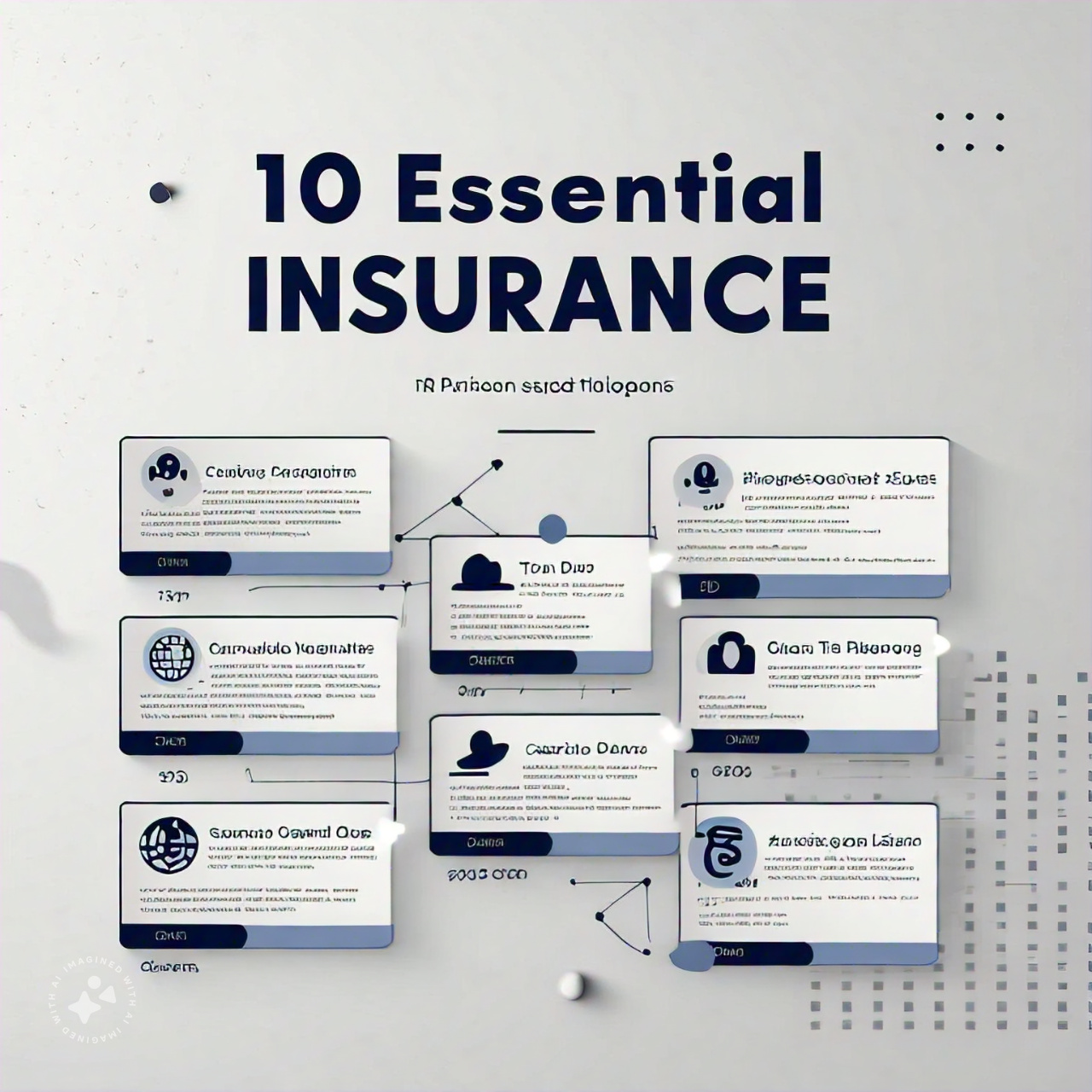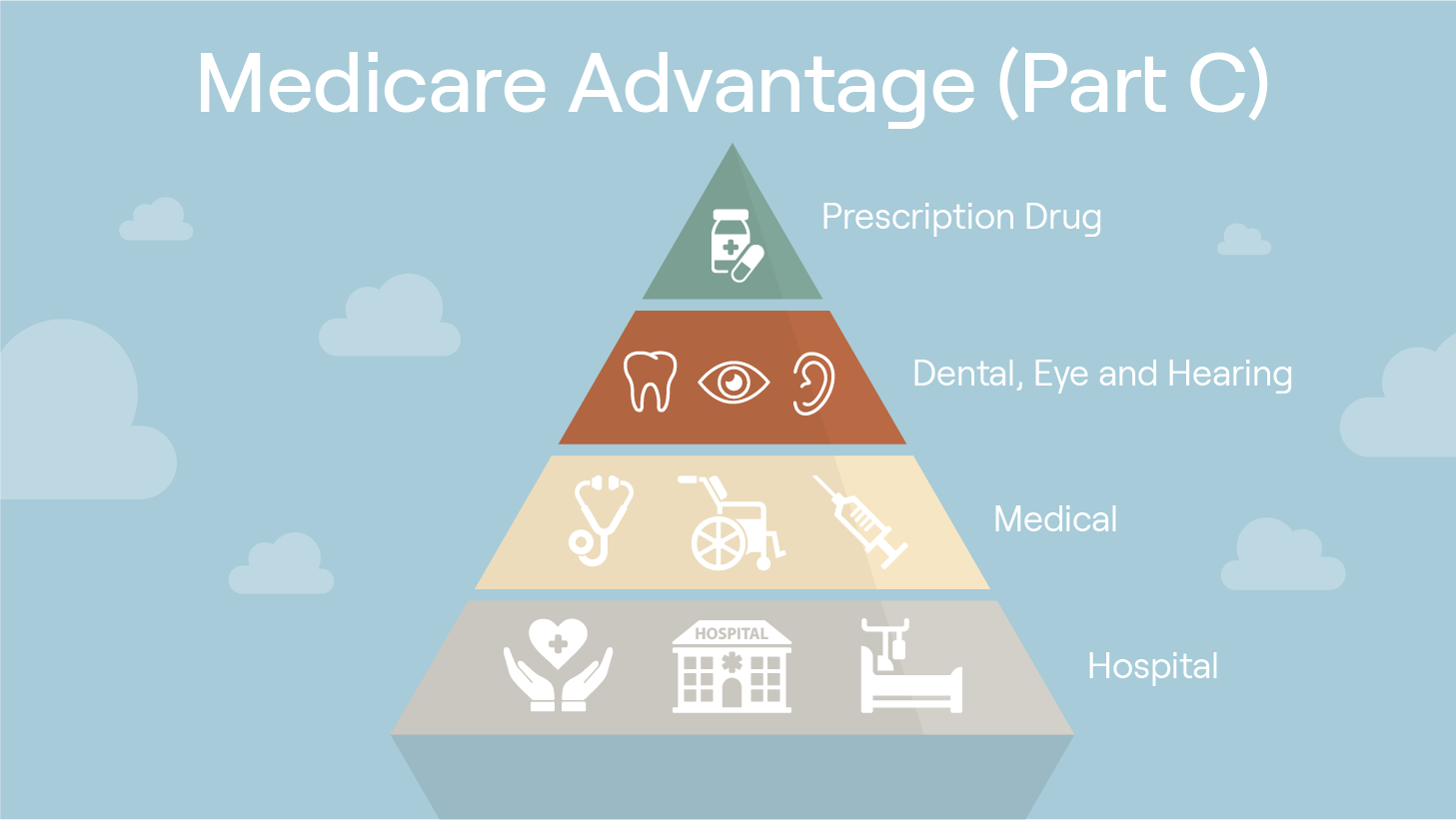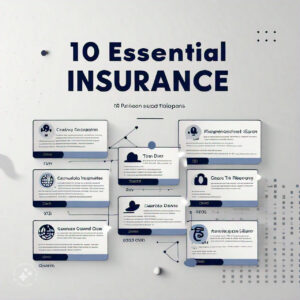Is it a Good Idea to Have an IUL?
In recent years, indexed universal life insurance (IUL) has gained popularity as a financial tool that combines the benefits of life insurance with those of an investment. Many people are considering IUL as an option for their financial planning. In this article, we will explore what an IUL is, its advantages and disadvantages, and whether it is a good idea for you to have an IUL.
Table of Contents
- What is an IUL?
- How Does an IUL Work?
- Pros of an IUL
- Cons of an IUL
- Is an IUL Right for You?
- Comparing IUL to Other Insurance and Investment Options
- How to Buy an IUL
- IUL Fees and Charges
- Understanding the IUL Policy Terms and Conditions
- Risks of an IUL
- Tax Implications of an IUL
- How to Evaluate an IUL Policy
- Common Misconceptions About IUL
- IUL vs. Other Investment Options
- Conclusion
- FAQs
What is an IUL?
Indexed universal life insurance (IUL) is a type of permanent life insurance policy that provides death benefit protection and cash value accumulation. The policy’s cash value grows based on the performance of a stock market index, such as the S&P 500. The policyholder has the option to allocate their premiums into various investment options, including a fixed account, equity index account, or a combination of both.
How Does an IUL Work?
An IUL policy works by combining life insurance protection with the potential for investment growth. The policyholder pays premiums into the policy, and a portion of the premium is used to pay for the cost of insurance. The remaining portion of the premium is allocated to the investment account, which is tied to a stock market index.
The policy’s cash value grows based on the performance of the index, subject to a cap rate, floor rate, and participation rate. The cap rate limits the maximum return that the policy can earn, while the floor rate sets the minimum guaranteed return. The participation rate determines the percentage of the index’s return that the policy will earn.
Pros of an IUL
- Tax-Free Death Benefit: The death benefit paid to the beneficiary is income tax-free.
- Tax-Deferred Growth: The policy’s cash value grows tax-deferred, meaning there is no tax due on the investment gains until the funds are withdrawn.
- Flexible Premiums: The policyholder can adjust the premium payments, within certain limits, based on their financial situation.
- Investment Growth Potential: The policyholder can benefit from the growth potential of the stock market index, subject to the cap rate, floor rate, and participation rate.
- Access to Cash Value: The policyholder can borrow against the policy’s cash value or withdraw funds, subject to certain conditions.
Cons of an IUL
- High Fees: IUL policies typically have higher fees and charges than other types of life insurance policies and investment products.
- Complex: IUL policies can be complex, and it may be challenging for some people to understand the product’s inner workings.
- Risk of Policy Lapse: If the policyholder is unable to pay the premiums, the policy may lapse, resulting in the loss of coverage and any accumulated cash value.
- Market Volatility: The policy’s cash value is tied to the performance of the stock market index, which can be volatile and subject to fluctuations.
- Low Returns: The policy’s returns are subject to the cap rate, floor rate, and participation rate, which can limit the investment’s growth potential.
Is an IUL Right for You?
Whether an IUL policy is right for you depends on your financial goals and situation.
Some factors to consider when determining whether an IUL is right for you include your age, health, income, and financial goals. If you are younger and healthy, an IUL policy may be a good option for long-term financial planning. If you have a high income, an IUL policy can provide tax benefits and investment growth potential. However, if you have a lower income or significant debt, the fees and charges associated with an IUL policy may not be worth the investment.
It is essential to consult with a financial advisor to determine if an IUL is a good fit for your financial plan. They can help you evaluate the policy’s terms and conditions, compare it to other investment options, and determine if the investment aligns with your long-term financial goals.
Comparing IUL to Other Insurance and Investment Options
IUL policies are not the only life insurance and investment options available. Other types of life insurance policies include term life insurance, whole life insurance, and variable life insurance. Each type of policy has its benefits and drawbacks, and it is essential to understand how they compare to an IUL.
Term life insurance is the most straightforward type of life insurance policy, providing coverage for a specific period, typically between 10 and 30 years. Term policies are typically less expensive than permanent policies, including IUL. However, they do not offer any investment growth potential or cash value accumulation.
Whole life insurance is a type of permanent life insurance policy that provides guaranteed death benefit protection and cash value accumulation. Whole life policies offer fixed premiums, and the policyholder can earn dividends based on the insurer’s financial performance. However, whole life policies typically have lower investment growth potential than IUL policies.
Variable life insurance is another type of permanent life insurance policy that provides death benefit protection and investment growth potential. The policy’s cash value is invested in separate accounts, which are similar to mutual funds. However, variable life policies are typically more expensive than IUL policies and can be subject to market risk.
How to Buy an IUL
To buy an IUL policy, you will need to work with a licensed insurance agent or financial advisor. They can help you evaluate different policy options, compare fees and charges, and determine which policy aligns with your financial goals.
When choosing an insurer, it is essential to research the company’s financial strength and stability. You can check an insurer’s financial ratings with third-party rating agencies, such as A.M. Best, Moody’s, or Standard & Poor’s.
IUL Fees and Charges
IUL policies typically have higher fees and charges than other types of life insurance policies and investment products. The fees and charges associated with an IUL policy can include:
- Insurance charges: the cost of insurance coverage, including mortality and expense charges and administrative fees.
- Premium loads: a percentage of the premium payment that is deducted to cover sales and marketing expenses.
- Rider charges: fees for optional policy riders, such as a long-term care rider or a waiver of premium rider.
- Surrender charges: fees charged if the policyholder cancels the policy or withdraws funds before a specified period.
- Annual fees: a flat fee charged annually for policy administration and account maintenance.
- Investment fees: fees associated with investment options, such as management fees, expense ratios, and index fees.
It is essential to review and understand the fees and charges associated with an IUL policy before purchasing the policy.
Some factors to consider when determining whether an IUL is right for you include your age, health, income, and financial goals. If you are younger and healthy, an IUL policy may be a good option for long-term financial planning. If you have a high income, an IUL policy can provide tax benefits and investment growth potential. However, if you have a lower income or significant debt, the fees and charges associated with an IUL policy may not be worth the investment.
It is essential to consult with a financial advisor to determine if an IUL is a good fit for your financial plan. They can help you evaluate the policy’s terms and conditions, compare it to other investment options, and determine if the investment aligns with your long-term financial goals.
Comparing IUL to Other Insurance and Investment Options
IUL policies are not the only life insurance and investment options available. Other types of life insurance policies include term life insurance, whole life insurance, and variable life insurance. Each type of policy has its benefits and drawbacks, and it is essential to understand how they compare to an IUL.
Term life insurance is the most straightforward type of life insurance policy, providing coverage for a specific period, typically between 10 and 30 years. Term policies are typically less expensive than permanent policies, including IUL. However, they do not offer any investment growth potential or cash value accumulation.
Whole life insurance is a type of permanent life insurance policy that provides guaranteed death benefit protection and cash value accumulation. Whole life policies offer fixed premiums, and the policyholder can earn dividends based on the insurer’s financial performance. However, whole life policies typically have lower investment growth potential than IUL policies.
Variable life insurance is another type of permanent life insurance policy that provides death benefit protection and investment growth potential. The policy’s cash value is invested in separate accounts, which are similar to mutual funds. However, variable life policies are typically more expensive than IUL policies and can be subject to market risk.
How to Buy an IUL
To buy an IUL policy, you will need to work with a licensed insurance agent or financial advisor. They can help you evaluate different policy options, compare fees and charges, and determine which policy aligns with your financial goals.
When choosing an insurer, it is essential to research the company’s financial strength and stability. You can check an insurer’s financial ratings with third-party rating agencies, such as A.M. Best, Moody’s, or Standard & Poor’s.
IUL Fees and Charges
IUL policies typically have higher fees and charges than other types of life insurance policies and investment products. The fees and charges associated with an IUL policy can include:
- Insurance charges: the cost of insurance coverage, including mortality and expense charges and administrative fees.
- Premium loads: a percentage of the premium payment that is deducted to cover sales and marketing expenses.
- Rider charges: fees for optional policy riders, such as a long-term care rider or a waiver of premium rider.
- Surrender charges: fees charged if the policyholder cancels the policy or withdraws funds before a specified period.
- Annual fees: a flat fee charged annually for policy administration and account maintenance.
- Investment fees: fees associated with investment options, such as management fees, expense ratios, and index fees.
It is essential to review and understand the fees and charges associated with an IUL policy before purchasing the policy.
Understanding the IUL Policy Terms and Conditions
Some factors to consider when determining whether an IUL is right for you include your age, health, income, and financial goals. If you are younger and healthy, an IUL policy may be a good option for long-term financial planning. If you have a high income, an IUL policy can provide tax benefits and investment growth potential. However, if you have a lower income or significant debt, the fees and charges associated with an IUL policy may not be worth the investment.
It is essential to consult with a financial advisor to determine if an IUL is a good fit for your financial plan. They can help you evaluate the policy’s terms and conditions, compare it to other investment options, and determine if the investment aligns with your long-term financial goals.
Comparing IUL to Other Insurance and Investment Options
IUL policies are not the only life insurance and investment options available. Other types of life insurance policies include term life insurance, whole life insurance, and variable life insurance. Each type of policy has its benefits and drawbacks, and it is essential to understand how they compare to an IUL.
Term life insurance is the most straightforward type of life insurance policy, providing coverage for a specific period, typically between 10 and 30 years. Term policies are typically less expensive than permanent policies, including IUL. However, they do not offer any investment growth potential or cash value accumulation.
Whole life insurance is a type of permanent life insurance policy that provides guaranteed death benefit protection and cash value accumulation. Whole life policies offer fixed premiums, and the policyholder can earn dividends based on the insurer’s financial performance. However, whole life policies typically have lower investment growth potential than IUL policies.
Variable life insurance is another type of permanent life insurance policy that provides death benefit protection and investment growth potential. The policy’s cash value is invested in separate accounts, which are similar to mutual funds. However, variable life policies are typically more expensive than IUL policies and can be subject to market risk.
How to Buy an IUL
To buy an IUL policy, you will need to work with a licensed insurance agent or financial advisor. They can help you evaluate different policy options, compare fees and charges, and determine which policy aligns with your financial goals.
When choosing an insurer, it is essential to research the company’s financial strength and stability. You can check an insurer’s financial ratings with third-party rating agencies, such as A.M. Best, Moody’s, or Standard & Poor’s.
IUL Fees and Charges
IUL policies typically have higher fees and charges than other types of life insurance policies and investment products. The fees and charges associated with an IUL policy can include:
- Insurance charges: the cost of insurance coverage, including mortality and expense charges and administrative fees.
- Premium loads: a percentage of the premium payment that is deducted to cover sales and marketing expenses.
- Rider charges: fees for optional policy riders, such as a long-term care rider or a waiver of premium rider.
- Surrender charges: fees charged if the policyholder cancels the policy or withdraws funds before a specified period.
- Annual fees: a flat fee charged annually for policy administration and account maintenance.
- Investment fees: fees associated with investment options, such as management fees, expense ratios, and index fees.
It is essential to review and understand the fees and charges associated with an IUL policy before purchasing the policy.
Understanding the IUL Policy Terms and Conditions
Some factors to consider when determining whether an IUL is right for you include your age, health, income, and financial goals. If you are younger and healthy, an IUL policy may be a good option for long-term financial planning. If you have a high income, an IUL policy can provide tax benefits and investment growth potential. However, if you have a lower income or significant debt, the fees and charges associated with an IUL policy may not be worth the investment.
It is essential to consult with a financial advisor to determine if an IUL is a good fit for your financial plan. They can help you evaluate the policy’s terms and conditions, compare it to other investment options, and determine if the investment aligns with your long-term financial goals.
Comparing IUL to Other Insurance and Investment Options
IUL policies are not the only life insurance and investment options available. Other types of life insurance policies include term life insurance, whole life insurance, and variable life insurance. Each type of policy has its benefits and drawbacks, and it is essential to understand how they compare to an IUL.
Term life insurance is the most straightforward type of life insurance policy, providing coverage for a specific period, typically between 10 and 30 years. Term policies are typically less expensive than permanent policies, including IUL. However, they do not offer any investment growth potential or cash value accumulation.
Whole life insurance is a type of permanent life insurance policy that provides guaranteed death benefit protection and cash value accumulation. Whole life policies offer fixed premiums, and the policyholder can earn dividends based on the insurer’s financial performance. However, whole life policies typically have lower investment growth potential than IUL policies.
Variable life insurance is another type of permanent life insurance policy that provides death benefit protection and investment growth potential. The policy’s cash value is invested in separate accounts, which are similar to mutual funds. However, variable life policies are typically more expensive than IUL policies and can be subject to market risk.
How to Buy an IUL
To buy an IUL policy, you will need to work with a licensed insurance agent or financial advisor. They can help you evaluate different policy options, compare fees and charges, and determine which policy aligns with your financial goals.
When choosing an insurer, it is essential to research the company’s financial strength and stability. You can check an insurer’s financial ratings with third-party rating agencies, such as A.M. Best, Moody’s, or Standard & Poor’s.
IUL Fees and Charges
IUL policies typically have higher fees and charges than other types of life insurance policies and investment products. The fees and charges associated with an IUL policy can include:
- Insurance charges: the cost of insurance coverage, including mortality and expense charges and administrative fees.
- Premium loads: a percentage of the premium payment that is deducted to cover sales and marketing expenses.
- Rider charges: fees for optional policy riders, such as a long-term care rider or a waiver of premium rider.
- Surrender charges: fees charged if the policyholder cancels the policy or withdraws funds before a specified period.
- Annual fees: a flat fee charged annually for policy administration and account maintenance.
- Investment fees: fees associated with investment options, such as management fees, expense ratios, and index fees.
It is essential to review and understand the fees and charges associated with an IUL policy before purchasing the policy.
Understanding the IUL Policy Terms and Conditions
IUL policies can be complex, and it is essential to understand the policy’s terms and conditions before purchasing the policy. Some key terms and conditions to review include:
- Death benefit: the amount paid to the beneficiary upon the policyholder’s death.
- Cash value: the policy’s accumulated value, which can be accessed through withdrawals or loans.
- Interest crediting: the method used to calculate the policy’s investment growth, which can be based on a fixed interest rate or tied to an index’s performance.
- Caps and floors: limits on the amount of investment growth the policy can earn, which can vary based on market conditions.
- Participation rates: the percentage of the index’s growth that is credited to the policy, which can vary based on market conditions.
- Policy loans: loans that can be taken out against the policy’s cash value, which must be repaid with interest.
- Surrender charges: fees charged if the policyholder cancels the policy or withdraws funds before a specified period.
It is essential to review and understand these terms and conditions before purchasing an IUL policy to ensure that the policy aligns with your long-term financial goals.
Pros and Cons of IUL Policies
Like any investment or insurance product, IUL policies have their benefits and drawbacks. Some of the advantages of IUL policies include:
- Tax-deferred growth: IUL policies offer tax-deferred growth, which means that you will not have to pay taxes on the policy’s investment gains until you withdraw funds from the policy.
- Flexible premiums: IUL policies offer flexible premiums, which means that you can adjust your premium payments over time to align with your changing financial needs.
- Death benefit protection: IUL policies provide a death benefit to your beneficiaries upon your death, providing peace of mind and financial security.
- Investment growth potential: IUL policies offer investment growth potential, which can help you build wealth over time.
Conclusion
Whether or not it is a good idea to have an IUL policy depends on your financial situation and long-term goals. IUL policies can offer tax benefits, investment growth potential, and death benefit protection, but they also come with high fees and complex policy terms and conditions.
Before purchasing an IUL policy, it is crucial to consult with a financial advisor, compare it to other investment options, and review the policy’s terms and conditions carefully. Only then can you determine if an IUL policy is the right fit for your long-term financial goals.
FAQs
- What is an IUL policy, and how does it differ from other types of life insurance policies?
- What are the fees and charges associated with an IUL policy?
- What are the advantages and disadvantages of IUL policies?
- How do I buy an IUL policy, and what should I consider when choosing an insurer?
- Should I consider an IUL policy for long-term financial planning?
- Get the Most Long-Term Protection for Your Money with Indexed Universal Life Insurance (IUL)
- “The Top 5 Benefits of Indexed Universal Life Insurance”
- “Understanding Indexed Universal Life Insurance: Risks, Rewards, and Financial Planning”
- The Downside of IUL: Understanding the Risks and Limitations of Indexed Universal Life Insurance
- Indexed Universal Life Insurance: Understanding How it Works
Benefits of Medicare Advantage for Veterans
Veterans and Medicare Advantage plans represent a crucial intersection of health- care services designed to enhance the medical coverage available…
10 Essential Insurance Tips to Protect Your Future
1. Assess your insurance needs based on income, assets, and dependencies. 2. Understand policy types: life, health, auto, home, and…
ACA 2025 Open Enrollment
The ACA 2025 Open Enrollment Period represents a pivotal opportunity for individuals and families to obtain health insurance coverage under…
Medicare Annual Enrollment Period 2025
The Medicare Annual Enrollment Period (AEP) for 2025 is a critical time for beneficiaries to review and adjust their Medicare coverage, running…
Medicare Advantage and the Nearing Annual Election Period
Medicare Advantage and the Nearing Annual Election Period Introduction Navigating Medicare can feel like trying to read a map written in a…
Understanding Medicare Advantage Plans
Understanding Medicare Advantage Plans Medicare Advantage plans have become a popular alternative for people who want more flexibility and comprehensive coverage…













